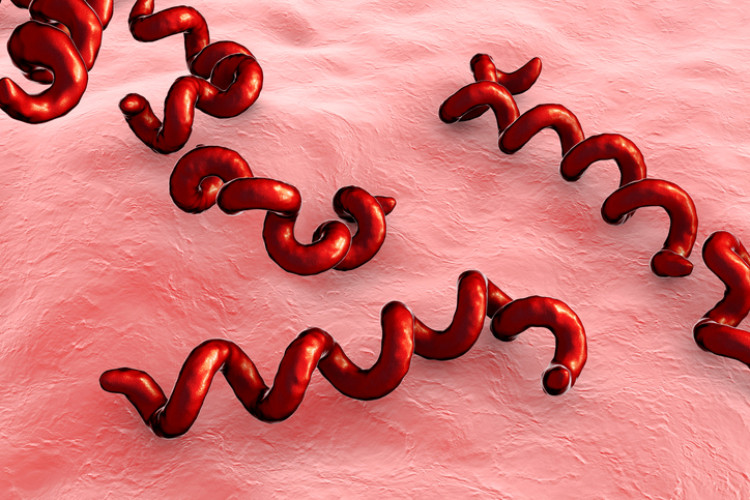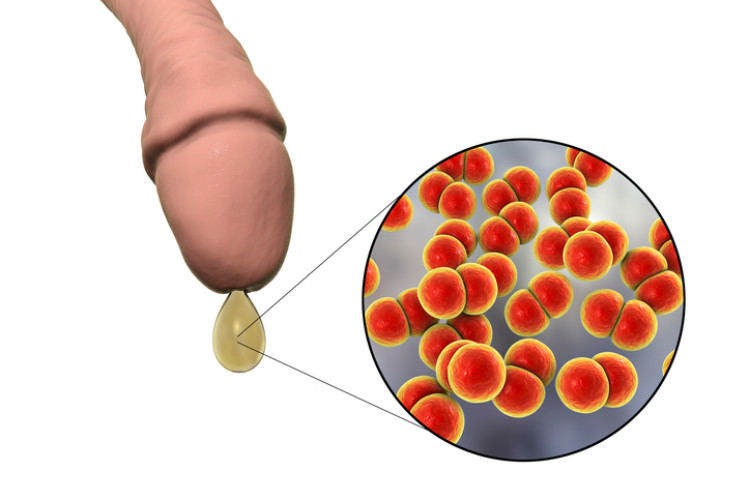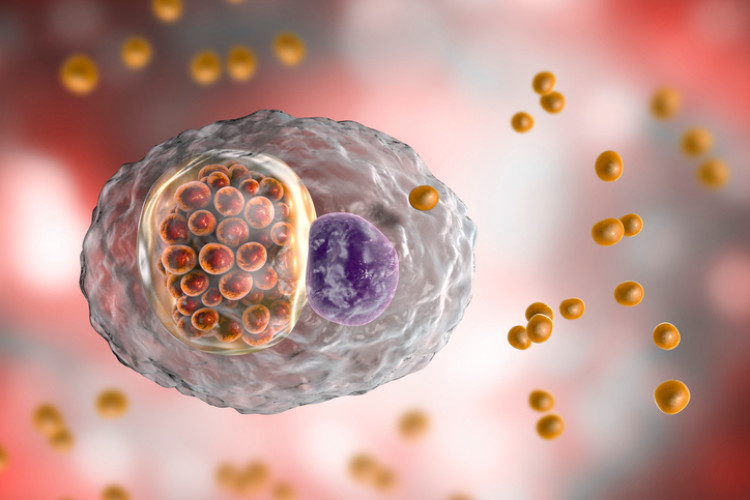STDs in summer: what are the dangers of sex tourism?

People travel in the summer for relaxation, others like to explore new countries or visit different sights. They crave to learn about unfamiliar cultures, their way of life and more. The desire to experience something new and unfamiliar is ingrained in us and difficult to control. This is especially true when it comes to meeting new people and having experiences with them. The threat posed by STDs, which short-term holiday acquaintances often bring, can be trivial but unpleasant, and sometimes even incurable with a fatal end. What are they and how do they manifest themselves? What are the risks and how can we protect ourselves?
Article content
- Sexually transmitted diseases and summer
- Direct threat - sex tourism
- How can we get infected?
- What types of venereal disease are we familiar with?
- AIDS (acquired immunodeficiency syndrome)
- Syphilis (luess)
- Gonorrhoea
- Trichomoniasis urogenitalis
- HPV infection
- Chlamydial infections
- How to protect yourself against sexually transmitted diseases?
Sexually transmitted diseases and summer
A sexually transmitted disease or STD is an infectious disease that can be contracted in most cases either through sexual intercourse or other sexual contact with another person.
Of course, STDs can also be transmitted, for example, through blood (wounds, needle sticks).
The threat of the summer months
Sun, water, relaxation, nice tanned bodies, a few drinks and the problem is solved. In the summer months people have more free time as it is a holiday season for most of them. Their desire for the opposite sex is also higher.
However, unprotected intercourse brings with it many risks besides the initial pleasure. The most common problems of this type include sexually transmitted diseases, other diseases transmitted by direct contact, droplet infection, oral route (through the mouth) and otherwise or unwanted pregnancies.
Protected sexual intercourse is a slightly safer option. However, it can also lead to unexpected situations where the end result is the same.
Direct threat - sex tourism
Sex tourism refers to a form of tourism that seeks partners for the purpose of a single sexual encounter or a short-term relationship for sex.

It is practised more regularly by more promiscuous people or by anyone on a one-off basis.
The more frequent the sexual contact with strangers, the higher the risk of infection. It is also possible for any of us to fall prey to an exotic beauty or a beautiful tanned stranger. We are only human, it happens.
Desire is hard to resist. But what we do know and should influence is awareness of and protection against sexually transmitted diseases.
TIP: Read also the article: What are the risks of changing sexual partners and what STDs we know
How can we get infected?
Sexually transmitted diseases are primarily transmitted through sexual contact, but also through other sexual contact with another person. Transmission occurs through direct genital contact and excretion of bodily fluids. Genital or anal contact with the mouth can also occur.
Transmission by saliva during kissing is not possible for diseases such as AIDS, syphilis or gonorrhoea. It may occur exceptionally when the oral cavity of both the carrier and the potentially infected person is injured, or by blood.
STD test
There is no shame in getting tested. It can be done by a general practitioner, a dermatologist, women by a gynaecologist and men by a urologist. However, if you do not want to explain to anyone why you live the way you do, it is possible to get tested anonymously, among other things.
What types of venereal disease are we familiar with?
Sexually transmitted diseases, or STDs, are all diseases that can be transmitted, and most often are transmitted, through sexual intercourse or other sexual contact. These include diseases caused by viruses, bacteria, fungi and parasites.
Serious diseases include AIDS, syphilis, gonorrhoea, HPV and trichomoniasis.
Less serious diseases include hepatitis B and C, contagious molluscum (genital warts), genital herpes, chlamydial infection or lice.
AIDS (acquired immunodeficiency syndrome)
This is the most serious sexually transmitted viral disease for which there is no cure today. It is caused by the HIV virus (human immunodeficiency virus).
The name implies that this virus attacks the human immune system. HIV is found asymptomatically in blood, semen and vaginal fluids until the onset of AIDS.

HIV/AIDS transmission
Transmission occurs through sexual contact - vaginal, anal and oral sex. Transmission by blood (transfusion, injury, use of the same syringe by drug addicts) is also possible. Transplacental transmission (from mother to foetus) has also been confirmed.
Stages of HIV/AIDS
- Stage - After infection with HIV, the period of AIDS seroconversion begins. This period from the entry of the virus into the body usually lasts 3 weeks to 3 months. 50% of those infected may not show any symptoms even during this period. In the other half of those infected, we observe flu-like symptoms with temperatures that persist for 2 to 3 weeks. Muscle and joint pain, symptoms of tonsillitis and infectious mononucleosis may be associated. Sometimes a small percentage of patients develop diarrhoea, subfebrile illness, fever, enlarged lymph nodes, vaginal candidiasis with discharge, oral candidiasis, hairy leukoplakia of the tongue, recurrent herpes zoster, and pain around peripheral nerves.
- Stage - After this period, the infected person becomes an asymptomatic carrier. Without any signs of disease, he or she can unknowingly spread the virus further. The person is an asymptomatic carrier until the outbreak of the disease itself, which means a period of several years. Signs of viremia can be detected in the blood at a low level. Values increase before the outbreak of the last stage.
- Stage - The last stage is actually the outbreak of AIDS itself. It is the terminal stage after a period of long-term HIV carriage. Here the immune system is already being destroyed. It manifests itself in recurrent and difficult to manage infections and various associated cancerous diseases that arise due to the very low immunity of the organism.
Diagnosis and treatment of HIV/AIDS
Diagnosis is based on the patient's general medical history, especially a travel history during which unprotected sexual contact with a stranger occurred in a country at risk (West Africa, Turkey, Italy, Greece).
The HIV virus can be proven by serological testing, i.e. the presence of anti-HIV antibodies in the blood.
There is still no treatment that can completely rid the patient of the infection. However, medical efforts and science can alleviate the disease.
There is a difference in whether the patient is just a carrier of HIV or has already developed the disease. When HIV positivity is present without an AIDS outbreak, antiretroviral treatment is used, with up to three combinations of drugs being given. The most commonly given drugs are cotrimoxazole, alternatively pentamidine, dapsone or trimethoprim. This combination is also appropriate for AIDS itself, or zidovudine, lamivudine and indinavir are given.
If oral candidiasis is very common, diflucan is given. A rare opportunistic infection is a brain abscess, which is treated with pyrimethamine. Frequent herpetic skin manifestations are treated with acyclovir, followed by lifelong anti-relapse therapy.
Syphilis (luess)
Syphilis is a bacterial disease caused by the bacterium Treponema pallidum. It affects other organs and systems of the body such as the cardiovascular system or the nervous system (neurosyphilis) in addition to the genital organs.

Transmission of syphilis
The source of infection is always the sick individual. The skin and mucous membranes are the gateway to infection. The disease is most commonly transmitted by sexual contact and blood (transfusion, from untreated mother to fetus). Less common transmission is from disease sites (kissing, breastfeeding).
Stages of syphilis
- The primary stage of syphilis lasts about 9 weeks. It occurs about 3 weeks after infection. Exceptionally, it may be 10 to 12 weeks. After this varying incubation period, a rubbery bump, also called a hard ulcer (ulcus durum), appears at the site of contact (usually the genital tract). It is a painless, dark pink and shiny bump. It is harder to the touch. It reaches a size of about 1 cm and heals after about 3 to 6 weeks.
- The secondary stage of syphilis affects the patient for an average of 2,5 years, during which time the seeding attacks recur and gradually diminish. It is manifested by a large maculopapular lesion mainly on the mucous membrane of the oral cavity. The lesions are pinkish-red in colour with a whitish surface. The spread on the skin is symmetrical. The brownish to pinkish spots reach a diameter of about 1 cm. They mainly affect the lateral part of the chest, the palms of the hands and the soles of the feet. They do not itch or hurt. The lesions contain a number of Treponema pallidum bacteria. Later, there is a complete loss of hair in the area and leucoderma (local depigmentation).
- Tertiary syphilis is characterised by the formation of a soft ulcer or so-called syphilitic rubber (syphilis gummosa). These are sharply demarcated rubbery bumps of a brownish-red colour. They are soft in consistency and contain an inflammatory infiltrate. They spread into the surrounding area. After the infiltrative deposit has broken down, an ulcer is formed, which heals with an atrophic scar (below the surface of the skin). The scar is depigmented in the shape of a star with darker edges.
Diagnosis and treatment of syphilis
Diagnosis is based on anamnestic data (mainly promiscuous lifestyle), clinical picture (manifestations), microscopic evidence of treponemia from ulceri (ulcer) and serological examination.
The drug of first choice for the primary and secondary stages is pendepone (benzathine benzylpenicillin G). It is administered as a single injection. Subsequently, antibiotics are given in tablet form (doxycycline, erythromycin). Treatment for the tertiary stage is the same, but the doses of the drugs are higher.
Gonorrhoea
Gonorrhoea is a bacterial disease caused by the bacterium Neisseria gonorrhoeae. It affects the mucosal lining of the cervix, uterus, adnexa, rectum, urethra, as well as the conjunctivae or pharynx. The infection spreads to the surrounding area from the external genital tract to the internal and blood route anywhere.

Transmission of gonorrhoea
The source of infection is the sick person and transmission is almost exclusively through sexual contact. Mother-to-fetus transmission or infection of the fetus in the birth canal during delivery is rare. Indirect transmission by contaminated objects is equally rare.
Symptoms of gonorrhoea
The clinical picture is different in men and women due to the different genital tract. The incubation period is on average 4 days in men and 6 days in women.
The primary manifestation is inflammation of the ureter. The anterior, middle or posterior part of the urethra is affected, and the manifestations are slightly different. The disease is manifested by frequent urination in small quantities, burning during urination, and a mucoid purulent discharge from the urethra of a yellow-green colour, which is full of bacteria. The infection also spreads from the anterior part to the phimosis (foreskin) or by inflammation of the passages inside the urethra.
Similar is the case with inflammation of the middle part of the urethra. In the posterior part, the pain may radiate from the lower abdomen to the sacrum or thighs. The pain is pronounced during urination, with pressure to pass stool and erection. Blood in the urine and ejaculate can be observed. The infection spreads to the prostate and testicles. Untreated, the disease causes sterility.
In women, the urethra, cervix and uterus are most often affected, usually simultaneously with the adnexa and peritoneum. The disease manifests itself similarly to men with painful and frequent urination with a burning sensation and purulent discharge.
Painful menstruation with discharge from the vagina, menstrual disorders or even complete absence of menstruation, adhesions on the fallopian tubes and sterility are also associated. Secondary inflammation of the peritoneum causes severe abdominal pain, hardening of the abdomen and upward spread of the infection, with involvement and enlargement of the liver and spleen.
Diagnosis and treatment of gonorrhoea
Diagnosis is based on history, symptoms, but mainly microscopic, culture and serological examination to confirm the presence of gonnorrhoea. The symptoms are very similar to other urinary tract infections, but also to other genital infections - such as chlamydia.
Procainpenicillin G in combination with probenecid is used in the treatment of gonorrhoea. Tetracycline antibiotics are also effective. According to the WHO, ceftriaxone, ciprofloxacin, spectinomycin, erythromycin or ofloxacin are also suitable.
Untreated gonorrhoea may not leave any sequelae. The disease is well controlled with antibiotic treatment. Untreated gonorrhoea causes infertility but can also leave changes in other organs or joints.
Trichomoniasis urogenitalis
Trichomoniasis is a parasitic disease of the genitourinary tract, caused by the flagellate Trichomonas vaginalis. Its body is pear-shaped and 15 to 30 µm in size.

Transmission of trichomoniasis
The source of infection is the sick person. The parasite is found in the urethra and vagina. Transmission of the parasite to another person occurs during sexual intercourse.
Symptoms of trichomoniasis
The incubation period is about 10 days. After this period, about 10 % of men develop inflammation of the urethra, while the remaining patients do not show any symptoms.
In women, urethral inflammation and, more often, vaginal inflammation occur. The disease is manifested by pain, burning during urination when the urethra is affected, and white discharge (more pronounced after menstruation). No major problems have been identified and no link between infertility and the parasite has yet been established.
Diagnosis and treatment of trichomoniasis
Diagnosis is made on the basis of history, clinical manifestations, microbiological examination and culture.
The first choice of treatment is metronidazole or its derivatives. Treatment takes approximately 1 to 2 weeks and is usually successful. The prognosis is favourable.
HPV infection
HPV infection is a serious viral disease caused by the Human Papilloma Virus. It is a trigger for genital warts and even more serious cervical cancer.

HPV transmission
The source of infection is the sick person. However, most of the time it is an asymptomatic carrier who may not be aware of the spread of the disease to others. The disease is transmitted in 99% of cases by any sexual contact - vaginal, anal, and oral. In some few cases (less than 1%), infection has been reported from contaminated objects - towels, partner's fingers, sexual aids.
TIP: Read also the article.
Symptoms of HPV
The biggest risk with HPV is asymptomatic carriage. The virus is detected incidentally by screening during a gynaecologist's examination. Up to around 70% of those infected will shed the virus without knowing it. The remaining 20 to 30 or so infected will develop symptoms and complications.
The symptoms of the disease are also not very noticeable. The virus may manifest itself subtly by disturbances in the menstrual cycle or by bleeding outside the menstrual period. Genital warts are more visible and can appear in the external genital area, but also in the anus. In the case of genital warts, the incubation period is a few months, whereas in the case of cervical cancer, it can take several decades.
You may not have known: HPV causes cervical cancer. However, some high-risk HPV types can cause vaginal, penile, external genital, anal and head and neck cancers. It is also the only cancer for which there is a vaccine.
Vaccination, diagnosis and treatment of HPV
There is an effective vaccination against the HPV virus. This prevents the development of unpleasant complications such as warts, cervical cancer and other cancers related to HPV positivity.
Diagnosis relies on a screening examination, which is performed from a cervical smear. Due to the high percentage of asymptomatic carriers and poor clinical picture, the smear is the only 100% indicator of disease.
The HPV virus cannot be cured. Drugs can only prevent the frequent occurrence of, for example, genital warts (condylomas) and eradicate them if they appear. Freezing, laser, surgical removal are used.
Cervical cancer requires demanding and not always effective chemotherapy, radiotherapy, brachytherapy. Its effectiveness depends on many factors.
Interesting fact: HPV is the most common sexually transmitted disease. The reason for this is long-term asymptomatic carriage and neglect of gynaecological examinations. It is man who has given HPV the opportunity to spread so uncontrollably in the world.
Chlamydial infections
Chlamydial infections are the second most common sexually transmitted bacterial disease. They are caused by the cell-parasitic bacterium Chlamydia trachomatis.

Transmission of chlamydial infection
The disease is transmitted exclusively through sexual contact with another person who is infected with the infection. Intrauterine transmission from mother to fetus during birth and passage of the baby through the birth canal is possible.
Symptoms of chlamydial infection
The manifestations are different in men and women. However, the impact is the same, which is sterility and, in women, the inability to bear a fetus and repeated miscarriages.
In men, the disease manifests itself as inflammation of the urethra, burning and cutting sensations when urinating. Exceptionally, the inflammation spreads to the testicles, epididymis and pelvis.
In women, it also manifests itself as urethritis and vaginitis. Symptoms include itching, burning during urination, vaginal discharge usually white to yellowish, with or without a slight odour. Menstrual cycle disorders up to amenorrhoea (missed periods) are also common.
Common symptoms include inflammation of the joints, enlargement and soreness of the regional lymph nodes (groin), conjunctivitis (common in newborns), redness and burning of the eyes, opacity to blindness.
Diagnosis and treatment of chlamydial infection
Diagnosis is made on the basis of history, clinical picture, urinalysis and genital swabs. Treatment is antibiotic. Recently, the combination of drugs and bioresonance in the fight against chlamydia has also been highlighted.
How to protect yourself against sexually transmitted diseases?

- Sexual abstinence
- monogamous lifestyle
- minimising the number of sexual partners
- knowing the health status of yourself and your partner
- using protective equipment (condom)
- having regular medical check-ups
- getting vaccinated
- good hygiene habits
- living without drugs and syringes
The treatment of sexually transmitted diseases is difficult and lengthy. In some cases, there is no cure, complications are severe and the prognosis for the development of the disease is unfavourable or even fatal.
Therefore, young people in particular should think about the risk that these diseases pose. They should live in such a way as to minimize the possibility of contracting an insidious virus, bacteria, fungus or parasite that will make or take their lives.
Let's take a look at all the summer problems together:
Our health in summer - sun, heat, injuries and illness










